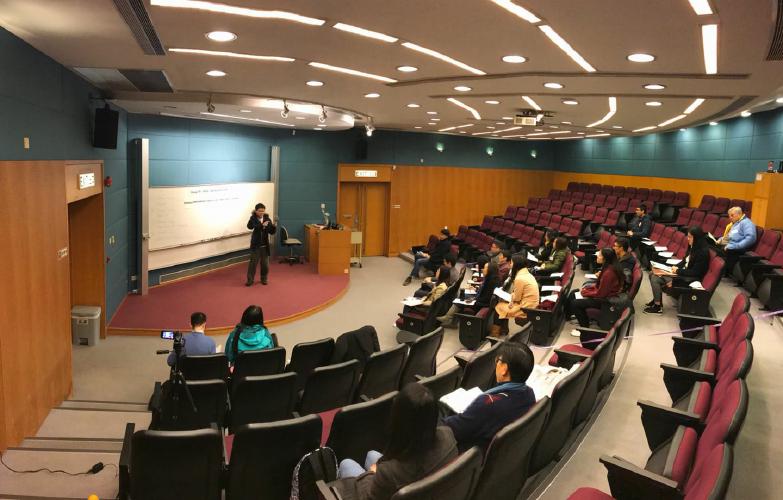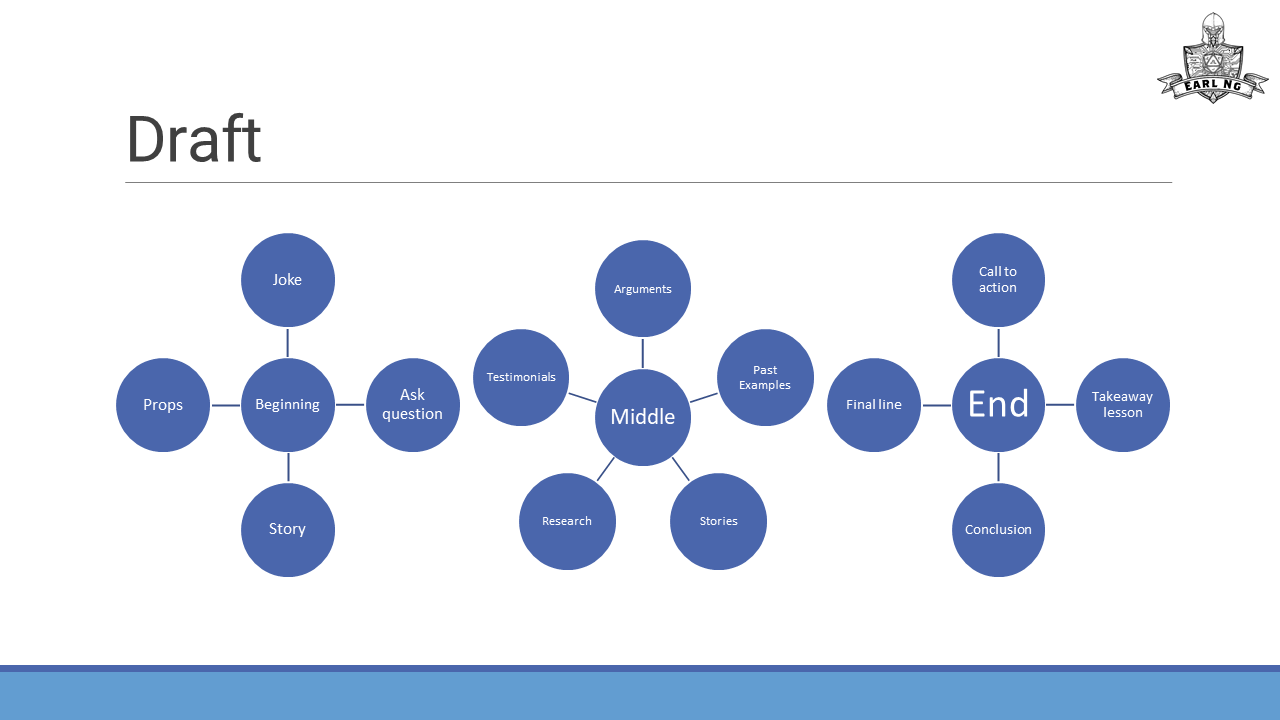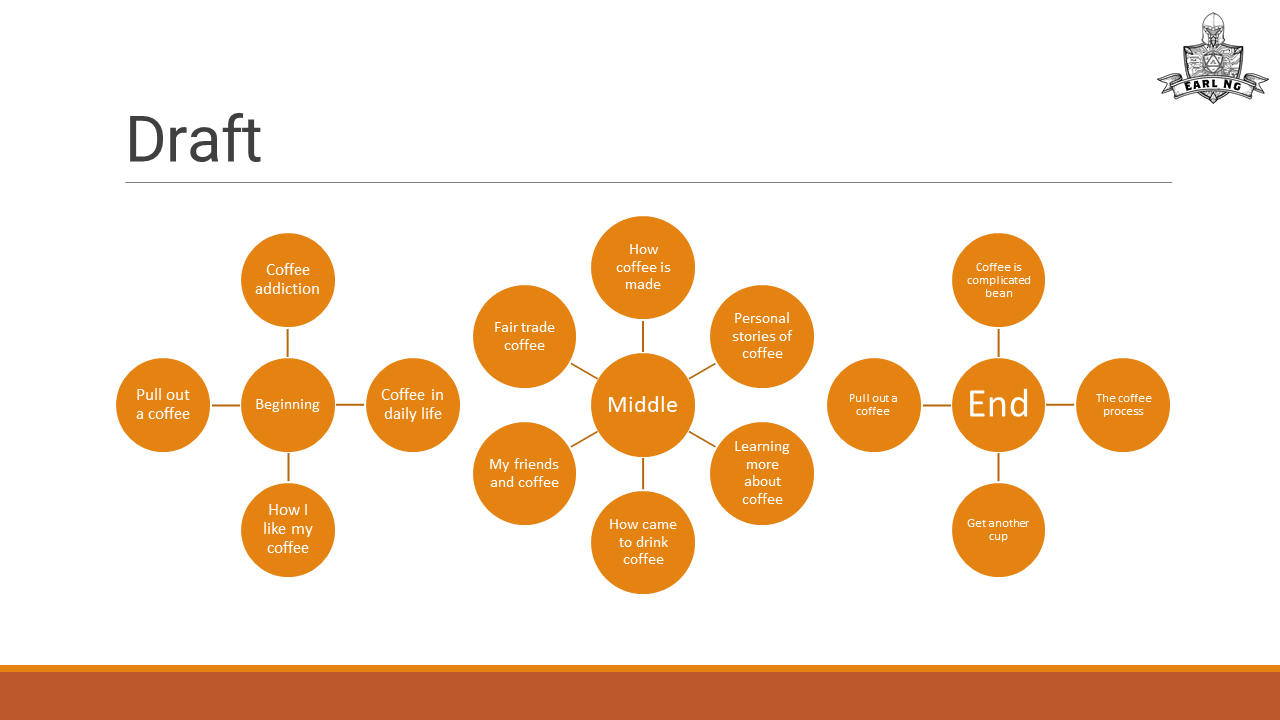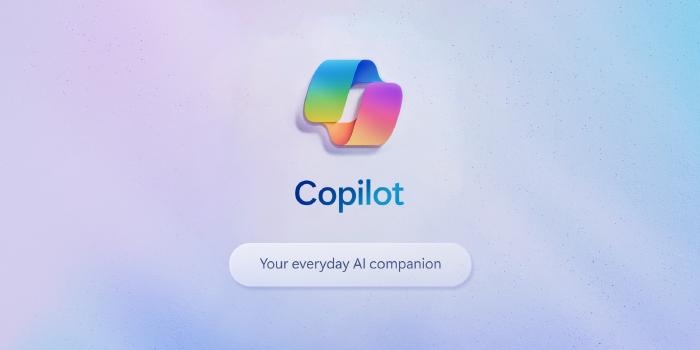Preparing a Prepared Speech

The contents of this article was originally presented as a workshop in a regular meeting of the Chung Chi College Toastmasters Club on November 27, 2021.
Project speeches are the bread and butter of any Toastmasters club. They provide members with the opportunity to flex their writing muscles, discover public speaking skills that they already have, and learn about what skills they need to improve upon. However, writing a project speech, aka a “prepared speech”, can seem like a very daunting task to newer members. This article/workshop is intended to help provide new Toastmasters with a framework and process to guide them through the challenge of writing and delivering a prepared speech.
Preparing a loose framework and draft
When preparing a project speech, the first two factors that you need to consider are your project speech objectives and the topic that you would like to talk about.
Project speech objectives refer to the public speaking skills that the Toastmaster curriculum wants you to focus on/develop for this speech project. The skills that you would be asked to develop can range from vocal variety, to humorous speeches, to the use of props in a speech. The topic refers the subject-matter that you would like to talk about during your speech. Most of the time, topics are based off of personal preference. But it is important to keep in mind the speech objectives when thinking about the topic. Before you start writing a speech; talk to your Vice-President of Education (VPE) to get a clear idea of the project objectives and what topics you can talk about to satisfy them.
Once you have successfully identified your speech objectives and have settled on a topic; you can begin coming up with a loose structure to your speech. Like any written work a prepared speech must always feature a beginning, middle, and end; with each section serving a specific purpose.
| Section | Purpose | Length |
|---|---|---|
| Beginning | A speech’s beginning has two major jobs. Firstly, it is meant to quickly and effectively catch your audience’s attention. Then it should quickly establish and make clear to your audience what exactly the topic of your speech is going to be about. The beginning should be quick, sweet, and seamlessly transition into the middle. | 10% |
| Middle | The middle of the speech needs to contain your main arguments. It contains all of the content, examples, testimonials, and/or research that will ultimately be used to support your final conclusion. As a result, the middle is the “meat” of your speech, and should be the longest section. | 70% |
| End | The end of your speech must clearly state what your final conclusion is. What are the one or two takeaways that your audience can get from your speech? Why did your audience spend the last 5-7 minutes listening to you? A conclusion must be clear, concise, and memorable. | 20% |
When starting to prepare the loose framework of your speech it is helpful to think about the topic-specific objectives that you want to be able to accomplish in each part of your speech.
After you have a good idea of those topic-specific objectives; you must then begin thinking about what set pieces you would like to use in each section to accomplish your speech’s goals. Set pieces are the different kinds of forms, structures, and literary tool kits you can use to build out a speech.
The slide below lists out a few example set pieces that can be used. Although this is by no means an exhaustive list.

An explanation on a few of the set piece examples:
- Story – begin your speech with a personal story about the topic that you would like to talk about. This helps inform the audience about why the topic is important to you (and possibly them).
- Props – pull out and play with a prop to catch your audience’s attention.
- Research, testimonials, and stories – list out and explain any existing literature, personal stories, and/or examples that support your final conclusion.
- Call to action – after hearing your arguments, what should the audience go out and do?
- Conclusion – in one sentence or less what is the one thing that the audience should remember at the end of your speech?
When deciding on what set pieces to use it is always a good idea to think about them in relation to the topic that you would like to talk about. If you are going to open your speech with a personal story, do you have a story that relates to the topic that you want to talk about, and will it ultimately support your final conclusion?
After you’ve decided on which set pieces to use you will have a loose skeleton for what your final speech will look like. You will have produced a clear roadmap that shows the points that you would like to make as well as how you are going to hit each of those points. The next step would be to then put pen to paper and start fleshing out the speech in its entirety. Connecting various set pieces, deciding on proper word choice, and working on the flow of your speech. Taking it from a loose skeleton of bullet points, to a collection of paragraphs that you may then present in front of your audience.
An example case
Let’s take the above process and apply it onto a more concrete example.
First thing we would have to do is to identify the project objectives. This speech will be used to satisfy the Project #2 requirements, “Researching and Presenting”.
“The purpose of this project is for the member to learn or review basic research methods and present a well-organized, well-researched speech on any topic.”
This means that my topic should be on something that I can research about, and present a well informed argument to my audience. With that in mind I settled on the topic of coffee ☕. For the personal reasons that coffee is something I am very interested in day-to-day life, and that it is something that I know that I can research about. Either how coffee is made (i.e. the manufacturing process), how to make a good cup of coffee, or even what makes coffee good.
With my speech objectives and topic settled, I can then start working on creating the loose structure of my speech; my beginning, middle, and end.
| Stage | Loose Structure |
|---|---|
| Beginning |
|
| Middle |
|
| End |
|
My current idea is that in my beginning I can establish to my audience that I like coffee and that it is important to me. I can do this in some eye-catching way and it signals to the audience that the topic of my speech will be on coffee. I could then pose the question about not knowing how coffee is made; that transitions into my middle where I elaborate and present my research. I then use the contents of my research to reinforce the conclusion in my end that coffee is complicated, there is more to consider when buying a cup of coffee.
This is a loose structure and can certainly be revisited and revised. But the most important thing is that I have a general idea of what I want to accomplish in this speech and its ultimate conclusion.
I then turn my attention to identifying the various set pieces that I can utilize in my beginning, middle, and end.

I then pick and choose from this brainstorming mind map the set pieces that I think would fit well with one another in a speech.
| Stage | Loose Structure | Set Pieces |
|---|---|---|
| Beginning |
|
|
| Middle |
|
|
| End |
|
|
Elaborating more on each section of my speech:
Beginning. I begin with a “confession” to the audience that I am literally addicted to coffee (perhaps in a Alcoholics Anonymous style of delivery). I am addicted because unless I have a coffee in the morning; I experience headaches in the afternoon (withdrawal symptoms). I then use this as a springboard to ask the question of “where does coffee come from?”
Middle. From the springboard question; I present my research on the coffee manufacturing process . The concerns around the fact that coffee is under priced . What fair trade coffee is, and why it is needed.
End. I then reflect on why it would be more socially responsible to purchase fair trade coffee. I then commit to being more conscious about the coffee I buy, and I initiate a call to action for the audience to do the same.
This loose structure and set pieces would then act as the roadmap for me to continue to flesh out my speech into a script which I would then practice and polish until it is ready to be presented to the club.
Practice, practice, and practice
After you’ve completed a draft script for your speech, the next thing to do would be to practice and revise the speech. There are different ways to practice your speech:
- Read your speech out loud – words that we read in our mind may sound different when we read them out loud. Hearing how your speech sounds will help you catch odd word choices, interruptions to your flow, as well as help you memorize your speech.
- Rehearse hand gestures, positioning, and voice – practice giving your speech as if you really were in front of an audience. Find a space that you can stand so you can experiment with the vocal tones you will use, your gestures, as well as your position on the stage.
- Memorize and internalize – practice your speech from beginning till end even if you make a mistake in between. By doing so, you are no longer bound by the “script” of the speech. And would allow you some level of flexibility if you were to lose your position in the “script”.
When practicing it would also help to get outside opinion and external feedback. Ask a friend if they would be willing to listen to you deliver your speech to provide advice on how it can be improved. Some points you can ask your friend to keep an eye out for:
- Do you understand what I am trying to say?
- Are my examples understandable?
- Is my flow good?
- How is my quality of delivery?
In this instance, you are essentially asking for a “mini-evaluation”. Ask your friend to point out what you did well in your speech, and any points of improvement.
When your friend gives you their feedback consider the the points that they gave to you, and revise your speech accordingly. What did they say you did well? Keep those. For the points of improvement, change where necessary (or appropriate).
Improvements and revisions to a prepared speech is an iterative process. Don’t be afraid to go back and change elements of your script to adjust to the feedback you received. But be mindful of not going too overboard with revisions. Improve it until it is as polished as can be. Or as polished as time allows.
Good luck!
Presenting a prepared speech can be a very intimidating experience, but it can also be very rewarding. By writing your own speeches you slowly improve your communication skills. Being able to weave together various concepts, ideas, and stories to tell a compelling narrative; sharing those speeches in the club meetings also builds up your capabilities as an orator and presenter; building the confidence to talk in front of large groups of people with ease.

You may encounter stumbles, but that is exactly why Toastmasters exists. It is an environment to try new things, experiment, fail, learn, improve, and grow. So let us all grow together.
Best of luck on your next prepared speech. I will certainly be looking forward to it.
A PDF copy of the slides used for the workshop can be downloaded here .



![[EXPLAINER] How Microsoft Copilot can help you write articles, blogs, and reports faster and better](/images/UsingMicrosoftCopilot_Full_hu79b160a24dce6e6d07c1bacf215dd0d3_433449_700x350_fill_q75_box_center.jpg)